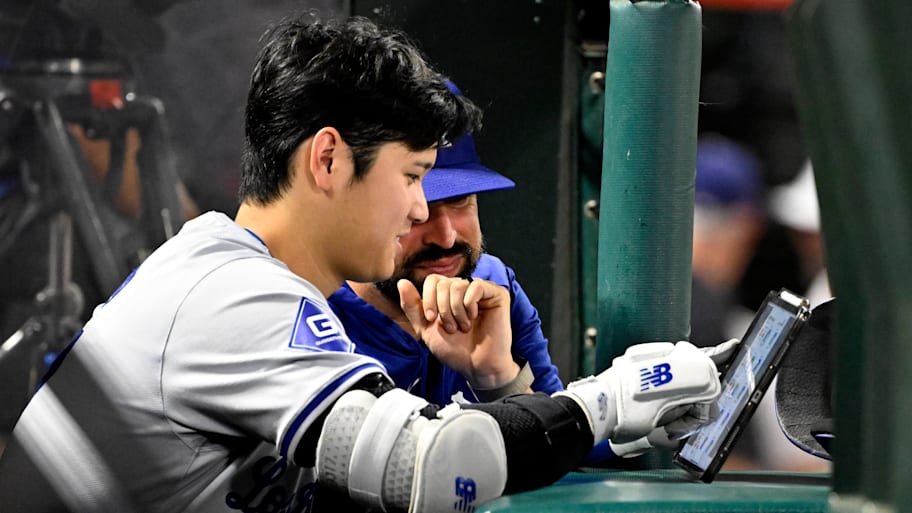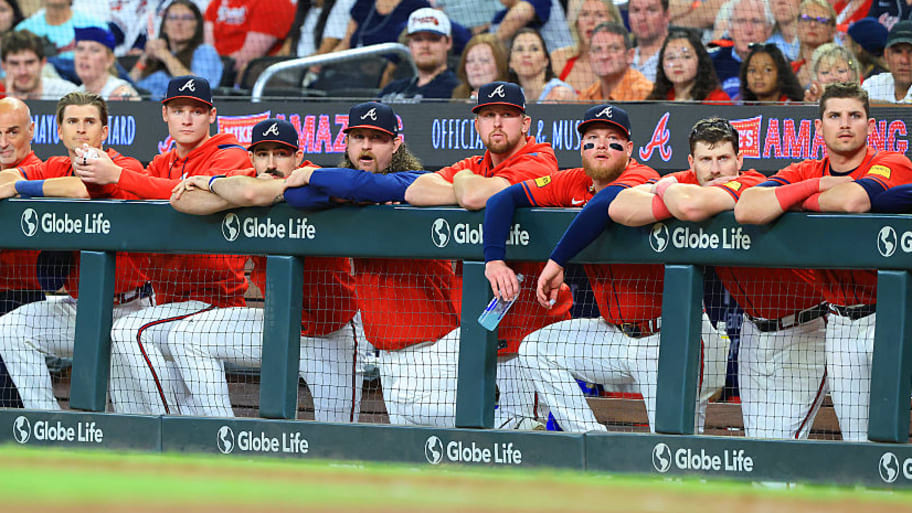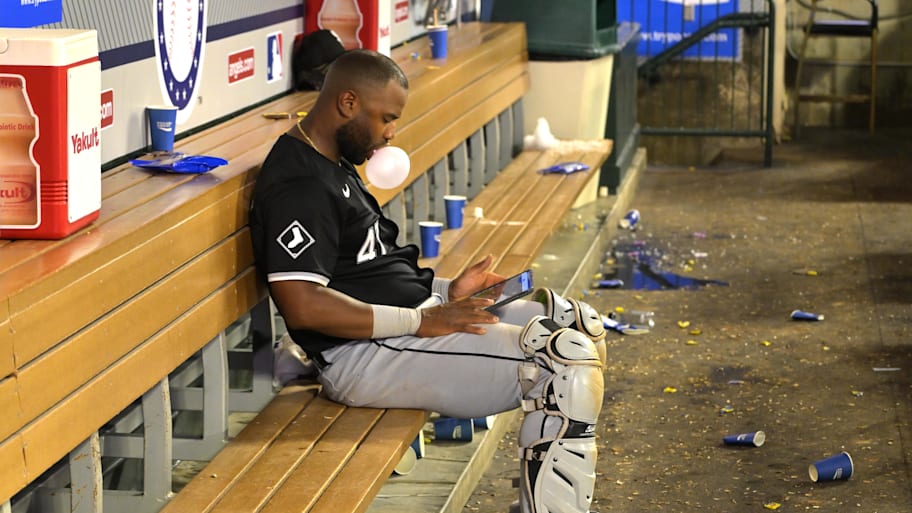In late April, Rangers manager Bruce Bochy saw something he didn’t like. It wasn’t just the lackluster at-bats that had his team 26th in the majors in OPS, 29th in walks per strikeout and 30th in runs scored. It was what was happening during those at-bats, in the dugout. “There’s times when guys do something good, come in and [their teammates’] heads are down,” Bochy says.
Those heads are looking at the 20 iPads Major League Baseball supplies for use during games. A few go to the bullpen and the day’s starting pitcher, but they are mostly claimed by the hitters, who pore over their swing mechanics, review the pitcher’s offerings or fact-check an umpire’s call.
“They are helpful,” Bochy admits. “[But] I think we get a little caught up in the process, instead of watching the game and competing out there.”
So the Rangers made what is becoming an increasingly common decision among MLB teams as they grapple with the proliferation of technology: The team took the iPads away. Echoing parents everywhere, baseball coaches are beginning to complain that the problem with Gen Z is too much screen time.
The Rangers scored 15 runs their first night as Luddites, and Bochy allowed himself a smile or two. “I loved it,” he says. “I really did.” But two days later—after the team scored one run, then none—they gave them back. Team officials had made their point. “You don’t want to take away any resource that might make them better,” Bochy says. “But it’s also just a reminder, Hey, it’s O.K. to watch the game.”
For much of baseball history, the most players could hope for was grainy broadcast film or some Zapruder footage from the stands. About a decade ago, teams opened video rooms within the ballparks, and almost immediately coaches began to lament that so many hitters fled there to review their swings that dugouts were empty during games.
MLB cut off in-game access in 2020 as part of COVID-19 protocols. The restriction, of course, came in the context of an MLB investigation that found the Astros had used the replay room to steal signs illegally. The players already had access to dugout iPads for scouting information and historical video; in ’21, the league gave them video during games, on a slight delay, cut so that they could not see the catcher’s signs.

Even the oldest-school coaches acknowledge some jealousy at the amount of visual feedback hitters have these days. “I wish I had ’em,” says Rangers hitting coach Bret Boone, the former All-Star second baseman who was brought on board in May in part because he’s the sort of guy who sometimes reminds players jovially, “Get the f--- off your iPads!” But he joins the growing old guard that sees loss as well as gain, starting with the image TV viewers see at least once per game, of a dugout full of players staring at iPads.
“You start to get dependent on it, and you’re starting to miss what’s most important,” says Dodgers manager Dave Roberts, whose team also cut down on iPads for a stretch in 2022, at the suggestion of first baseman Freddie Freeman. They kept one, so players who had an important concern could glance at it between innings, but otherwise they required eyes on the field. “We just needed to have guys focused on the game,” recalls third baseman Max Muncy.
So what are the important factors the iPad obscures?
Pitch tipping, for one. The videos are cut starting at the moment the pitcher begins his motion, meaning you can’t watch him come set and, perhaps, take a big breath before he throws a fastball. (Some veteran bench players do see this change as offering job security—they can use their eyes to pick up a minuscule motion that no one else, especially someone looking at a screen, caught.)
They can also take a matchup out of context. The scouting report may say that a pitcher throws a curveball 20% of the time in a certain count. But, says veteran outfielder Kevin Pillar, “If I’m the seventh hitter, I can see he hasn’t thrown a curveball for a strike to the first six hitters.” He might be able to eliminate that pitch.
And the iPads can distort the rhythm of the game entirely. “You miss how quick the game really is,” says Nationals manager Davey Martinez, who took the devices away for the last month of last season. “On the iPad you can make it slow, slow, slow.”
Game speed can actually be helpful when a player might be prone to overanalyzing, which watching video encourages. You’re unlikely to be able to make a mechanical change during a game. “If you’re having swing thoughts in the box, you’re probably not succeeding,” says Guardians catcher Austin Hedges.
“If you want to look at the iPad, put 50 line drives at 98 miles an hour [on there],” says Martinez. “But those guys will go back and look and they swung at a ball that went 55 feet. [You don’t need the iPad.] I can tell you: Stop chasing.”
Several managers and coaches have also expressed concern that the instant video breeds an obsession with reviewing balls and strikes. Where a hitter might once have had to wait for the final out of an inning, go play defense, and only then head to the video room if a call was still eating at him, he can now have someone hand him an iPad before he even puts his bat down.
“You had a two-strike count on you,” says Angels manager Ron Washington. “You can’t take a pitch that breaks that close.” But because the iPad agrees it was a ball, the player feels self-righteous instead of learning a two-strike approach. And regardless, the at-bat is over.
But most of all, coaches worry that players are so focused on the details that they lose sight of the whole enterprise. “We’re a team, trying to beat another team, in the present moment, not on an iPad,” says Dodgers first base coach Chris Woodward.

But the tools are helpful, and they definitely aren’t going away. Most minor league teams have at least a few iPads, so players arrive in the majors fully fluent in the technology—and often reliant on it. So there is an advantage to be found in teaching players to use it well.
“Instead of talking about what you shouldn’t be doing, coaches have the opportunity to explain what to look for,” says Guardians field coordinator Kai Correa. Overuse of iPads is not about the iPads, he says. It’s an indication that a player does not understand the value of watching the game on the field. So he tries to point out what he sees and why that is relevant. And hitters see an opportunity to reclaim some of the ground they have lost to pitchers in the development wars over the past few years. A pitcher can use data to optimize a pitch; at least the hitters can use data to get a good sense of what it’s doing.
“This game that we play now is so much more information-based that we need the metrics,” says Mets left fielder Brandon Nimmo. He likes to track a pitcher’s vertical break and horizontal movement in real time so he can adjust where he expects the ball to end up. “This, like, ‘Well, just go up there and kind of see what they have’ deal is kind of a thing of the past,” he says.
This is a classic baseball conundrum. The only constant of the sport is that it’s changing and its participants must adapt. “Why not have the old thing and the new thing?” says Correa. “Why not have quality conversations, experiences, watching in real time, iterating, reacting and also planning and reviewing and measuring? I will never, ever be comfortable with the argument that they’re mutually exclusive.”
And as for that TV image of a dugout full of players with their heads down, Correa sees it differently. “The irony of that is that if they’re showing that in-game,” he says, “that means nothing’s happening on the field.”
More MLB on Sports Illustrated
This article was originally published on www.si.com as Pad Habits Die Hard: MLB Grapples With the Rise of iPad Use During Games.
